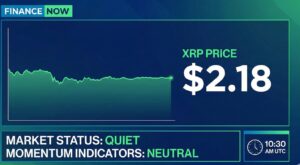As the internet advances into the realm of Web3, a new era of decentralization emerges, accompanied by a range of security considerations. While the early stages of Web3 have witnessed significant progress, excitement, and financial growth, they have also encountered fraud and cybersecurity breaches. While the promises of Web3 are exciting, it’s important to understand the potential risks and learn how to protect ourselves in this evolving landscape. In this article, we will explore Web3 security, identify risks, and unveil protective tools that ensure your digital playground remains safe and sound.
Unveiling the Main Types of Risks Web3 Security
It is vital to understand and recognize the potential risks that come with the rapid development of Web3, as it represents a significant transformation of the internet. The transition to Web3 brings about different categories of risks that must be addressed through proactive measures to ensure a secure digital environment.
Data Security
Transactions on the blockchain are encrypted and decentralized, which minimizes instances of a single point of attack or control. But this technology could also make data more vulnerable to risks such as data availability, data authenticity, and data manipulation. Also, less central control makes people worry about endpoint attacks, too much traffic, and problems with service availability.
Social Engineering
Even though blockchain-based systems are now in place, Web3 still faces concerns with social engineering. Ice phishing, rug pulling, flash loan scams, crypto-jacking, and smart contract logic hacks are some of these risks. The dangers of social engineering attacks like phishing are made even worse by the complexity of Web3 interfaces.
Identity and Anonymity
Web3 has tools like user-controlled wallets, ID portability, and data minimization that give users more control over their data. However, there are problems with self-sovereign identity, pseudonymity, and anonymity. When it comes to protection and privacy, public blockchains that are open to everyone have some trade-offs. Because Web3 is decentralized, there are worries about compliance, user experience, privacy, and anonymity.
Market Manipulation
Web3 depends on decentralized networks that necessitate secure channels for communicating with the real world. Although oracles are widely used, they cannot ensure the fairness of market prices or prevent market manipulation.
What steps can you take to safeguard yourself from these potential risks?
Consider using a hardware wallet. Hardware wallets are devices that store private keys offline, making them harder for hackers to access. ELLIPAL Titan and NGRAVE are examples of hardware wallets. Also, a password manager is a useful tool. Use a password manager to generate and save robust, distinct passwords for each of your Web3 profiles, minimizing the possibility of attacks. Most importantly, it is vital to stay on top of the latest security best practices and utilize these protection tools
Conclusion
The field of Web3 security is complex and constantly changing. You can enhance the safety of your digital assets and have a more secure Web3 experience by identifying the main risks and using appropriate protection tools.




























